Platform
Experimental Center
The Experimental Center of the Beijing Institute of Heart, Lung, and Blood Vessel Disease was founded in 2007. The Center applies high-quality technical services. It has a team of 12 members, 80% of whom hold a Bachelors degree or above. Two physicians were newly introduced to the Center in 2014, which will further improve the experimental capabilities of the scientific research and technical service.
The Center has established 6 comprehensive research platforms: Experimental Animal Model, Pathological and Physiological Research, Cellular and Molecular Etiology, Imaging System of Small Animals, Genetic Diagnosis, and Radioimmunoassay.
To adapt to the research requirements of hospitals, the Institute, and the other research institutes, the Experimental Center offers high-quality services for scientific researchers, with the philosophy of applying a dedicated and skilled service. An overview of the 6 platforms follows.

1.Experimental Animal Model Platform
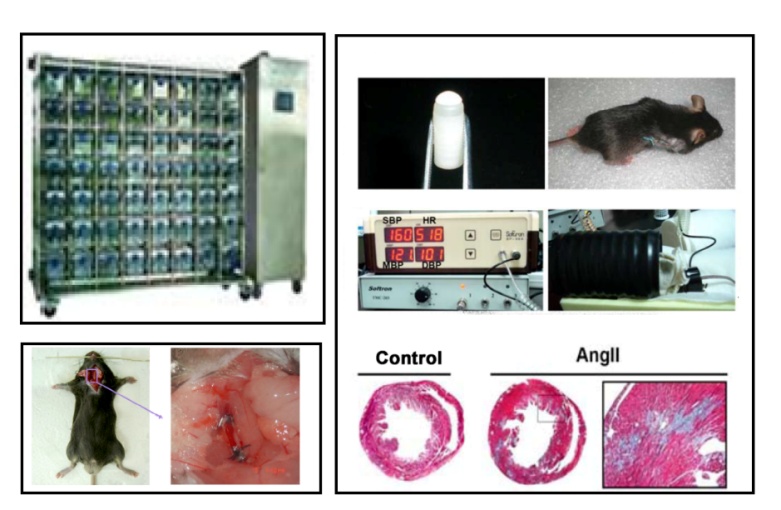
Ninety-four types of transgenic and knockout animals have been introduced to the Experimental Center to build the Experimental Animal Model Platform. Sixteen animal models of disease have been constructed for mouse models of vein bypass, including: myocardial infarction, ligation of the left anterior descending branch, cardiac fibrosis induced by hypertension, cardiac hypertrophy induced by transverse aortic constriction, aortic aneurysm induced by hypertension and hyperlipidemia, cerebral infarction, cerebral ischemia, vascular stent injury, heart failure induced by Adriamycin, renal fibrosis induced by unilateral ureteral obstruction, pancreatic cancer, colon cancer liver metastasis, skeletal muscle repair and regeneration, muscle injury induced by weight loss after long-term incapacitation, asthma induced by fumagillin, and colitis. The Platform focuses on the study of cardiovascular disease and other related diseases.
2.Pathological and Physiological Research Platform
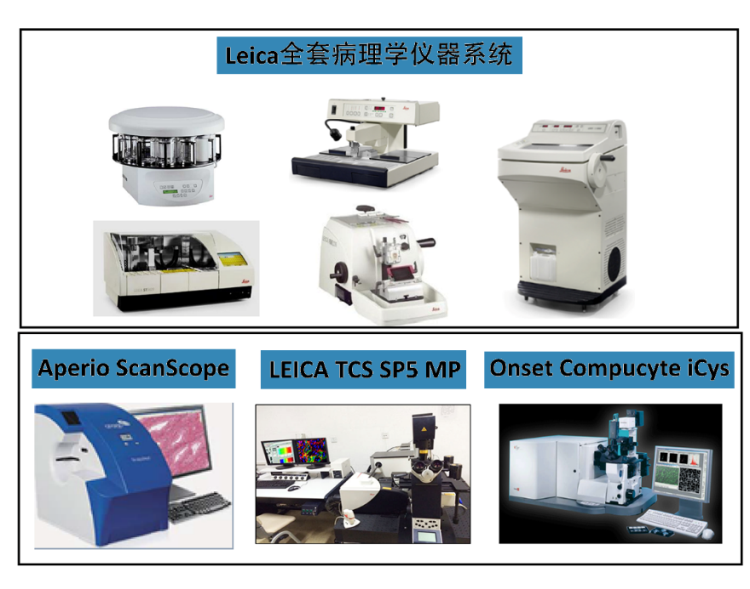
The Pathological and Physiological Research Platform supports sample preparation for high-quality imaging analysis of high-throughput, high-resolution data. A complete pathology instrument system from the German company Leica was introduced to the Experimental Center. This system can handle a large number of tissue samples, meets the various requirements for dealing with tissues of differing hardness for tissue slice preparation, automatically adjusts slice thickness in the range of 1–60 mm, and stains tissue sections with standard batch processing.
In addition, a comprehensive imaging analysis system for pathological tissue has been compiled. The system can scan chemiluminescence and fluorescence staining with high resolution and high throughput, which allows for the observation of cell proliferation, differentiation, cell–cell interactions, cell ion channels, platelet activation in microvascular systems, and thrombosis. This satisfies the requirements of pathological physiology, cell biology, immunology, pharmacology, genetics, and oncology research.
3. Cellular and Molecular Etiology Platform
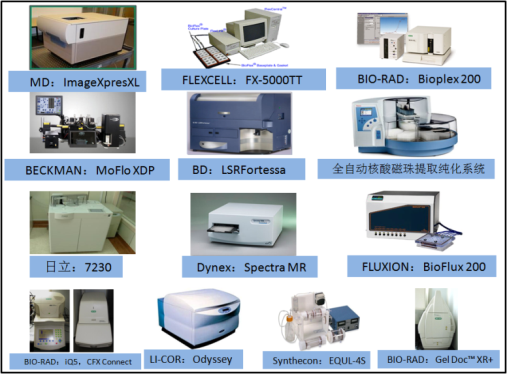
The Cellular and Molecular Etiology Platform is equipped with systems for tension load analysis, flow cytometry, quantitative PCR, high-content screening, protein microarray, automatic biochemical analysis, and image processing. The Platform allows clinicians and researchers to solve cellular and molecular etiology problems and provides technical services. The Platform also provides services for personnel training, development and popularization of new equipment, new technologies, and new methods.
The Platform has been used in a number of projects. For example, in September 2013, projects used the Platform for flow detection, platelet activation, leukemia immunophenotyping, and paroxysmal nocturnal hemoglobinuria analysis. The Platform was applied also for diagnosis and monitoring of the efficacy of emerging and other related diseases.
4.Noninvasive Imaging of Small Animals Platform
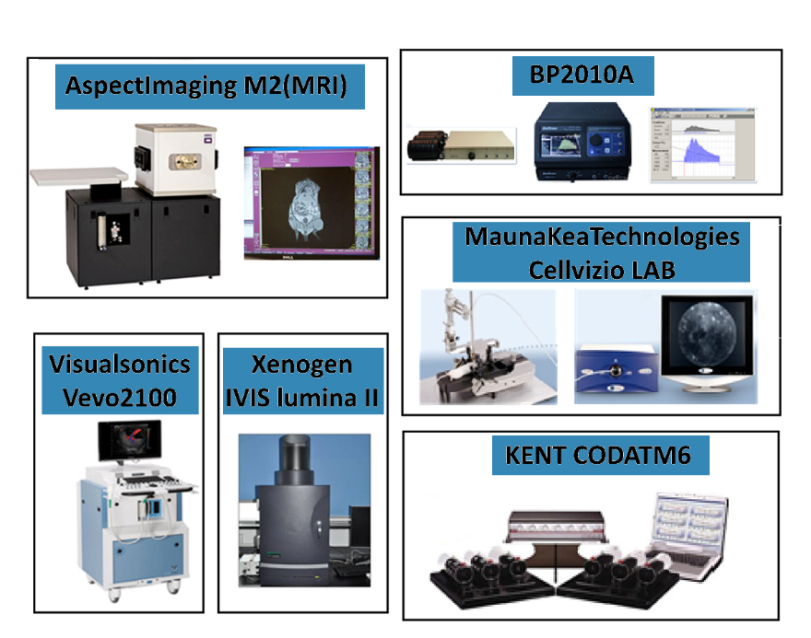
Several instruments have been introduced to the Experimental Center for the Noninvasive Imaging of Small Animals Platform, including a small animal in vivo imaging system, an animal ultrasound imaging system of ultra-high resolution, a compact MRI system of high performance, a pressure myograph system, an noninvasive arterial blood pressure monitor, an implantable biotelemetry system, and a small animal blood pressure electrocardiogram (ECG) telemetry system. The platform supports monitoring and analyzing blood pressure, heart rate changes, hemodynamic changes, cardiac function, and blood vessel diameter, and allows reconstruction of anatomical core dynamic cycles. It is a powerful platform for integrating in vitro studies with in vivo studies of living animals.
5. Genetic Diagnostic Platform
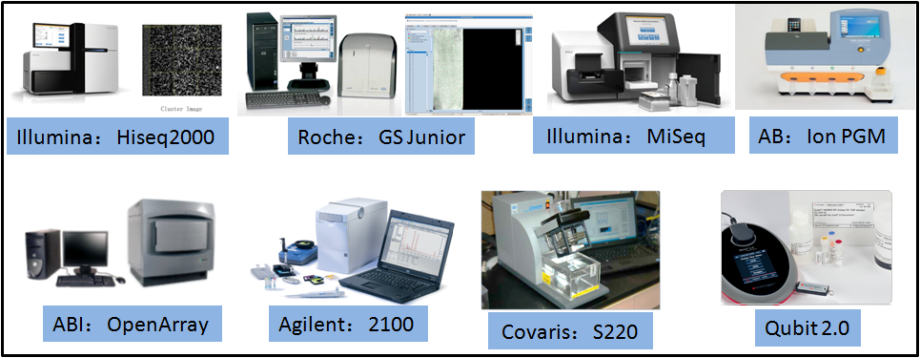
The Genetic Diagnostic Platform is equipped with Illumina HiSeq™ 2000, MiSeq™, and Roche 454 sequencing instruments, a PGM™ sequencer, and other large instruments. This platform provides research services to both the hospital and external sources, and has been involved in genetic diagnosis and genetic studies of many diseases.
The Platform has been used for the following applications:
· Genetic diagnosis of cardiovascular diseases: familial hypertrophic cardiomyopathy, familial dilated cardiomyopathy, long QT syndrome, Brugada syndrome, 17α- hydroxylase deficiency, 21α-hydroxylase deficiency, multiple endocrine neoplasia, hereditary multiple osteochondroma, Liddle syndrome, and Alport syndrome.
· Genotyping guidance of personalized medicine: genotyping to guide the use of drugs, such as warfarin, and other individual genotyping applications for other related drugs.
· Genetic diagnosis of other diseases: lipoprotein nephropathy, thin basement membrane nephropathy, hereditary nephritis, familial juvenile nephron renal tuberculosis, Gitelman syndrome, Leber’s hereditary optic neuropathy, retinal splitting, retinitis pigmentosa, Gilbert syndrome, hereditary hemochromatosis, acute fatty liver of pregnancy, hereditary spinocerebellar ataxia, and fatal familial insomnia.
6. Radioimmunoassay Experimental Platform

The Radioimmunoassay Experimental Platform has r-counters, centrifuges, cryogenic refrigerators, and other equipment. The Platform is the only radiation-free detection qualified laboratory. Functions currently performed by the hospital clinical services include renin, angiotensin, and aldosterone testing. The Platform has been used to screen and detect 40,000 persons since its establishment and has provided technical services for related departments at the hospital
Supporting Research Projects
The Experimental Center has provided services for the following 37 entities and initiatives in the past year:
1. 863 Program (1 project)
2. 973 Program (2 projects)
3. National Natural Science Foundation of Major Programs (1 project)
4. The Ministry of Education Innovation Team (1 project)
5. National Outstanding Youth (1 project)
6. The Ministry of Science and Technology Major Drug Discovery (1 project)
7. National Natural Science Foundation (20 projects)
8. Beijing Natural Science Foundation (3 projects)
9. Beijing Science and Technology Fund (5 projects)
10. Beijing Municipal Health Bureau (2 projects)




